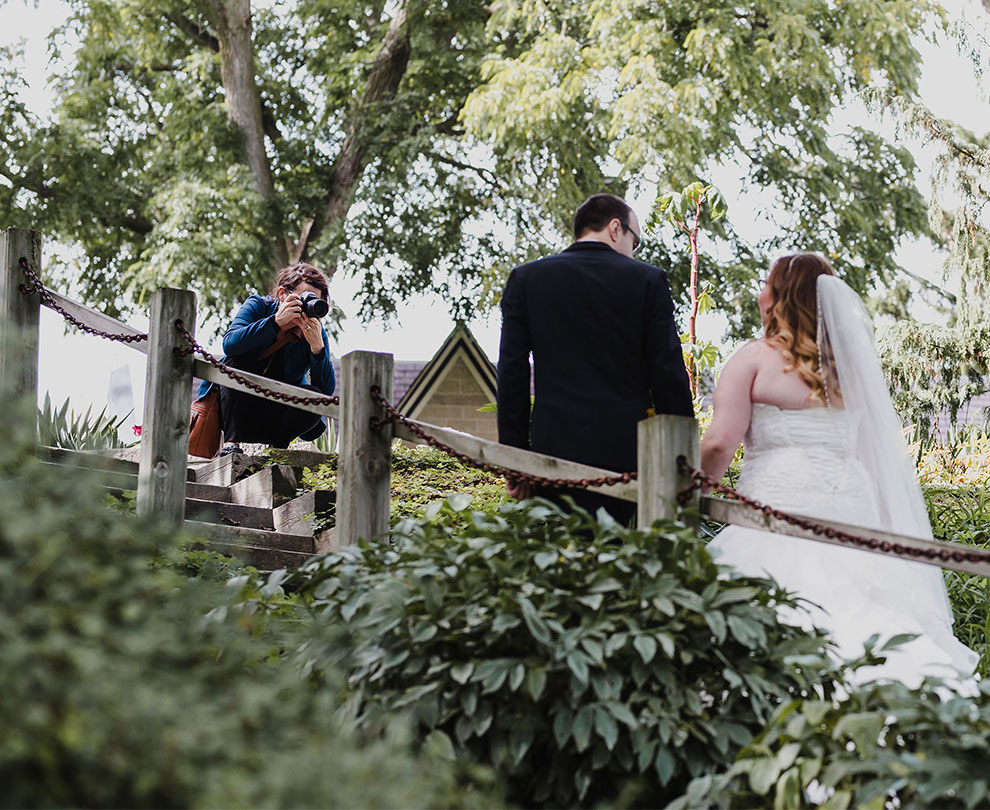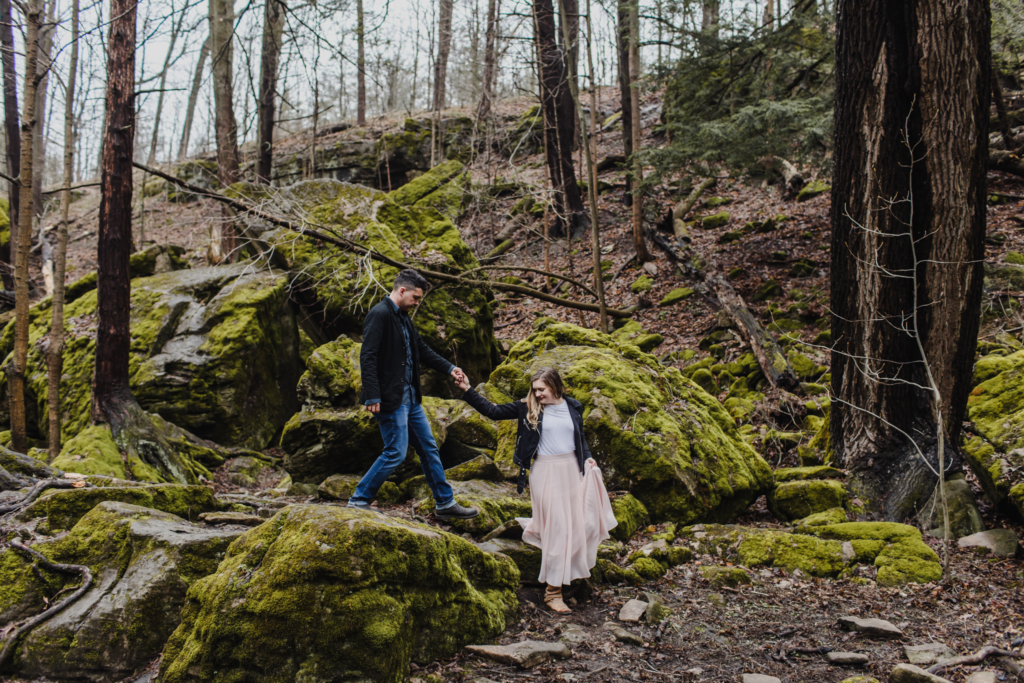
How to Tell Stories With Photos
Have you ever seen a photo and immediately been taken to that place? Like you can feel the sunlight through the trees, smell the fresh-cut lawn, hear the bride and groom giggling to each other? I have, and those are my favorite types of images.
These photos are so powerful because they tell stories. You’re not just seeing an image; you’re witnessing a moment in time, captured perfectly by the photographer.
More and more, I talk to clients looking for this kind of storytelling photography. Even if they don’t know the term for it, they know what they want: genuine, near-candid images that invoke feeling and capture the fleeting moments of emotion throughout their wedding day or shoot. If you want to cater to this trend and these clients, it’s important to learn how to tell stories with your photos.
The good news is you don’t have to be a writer to use the elements of storytelling in your own work. Great storytelling can take years to master, but you can start using these elements in your photography today.
How to Tell Stories in Your Photos With the 8 Elements of Storytelling
Traditionally, there are eight elements of storytelling: setting, character, plot, conflict, theme, point-of-view, tone, and style. As a photographer, you can add all of these to your tool belt and use them to create stunning, unforgettable images. You may not use every one of them in every image, but experiment with these elements during your next shoot and see what kinds of stories you can tell.
1. Setting
In both writing and photography, setting goes far beyond location. Consider all the pieces that make the setting memorable – the light, the temperature, the smell, the sounds – and allude to them in your images. Even if you can’t recreate the sound of birds singing in spring or the smell of wet autumn leaves, you can capture the motion in the space to give viewers the sense of being there.
For this image, I wanted to give the viewer a sense for how alive this venue felt. I wanted to capture the lush vines, the gentle sunlight, and the gentle movement of the trees in the background. While the eye is still drawn to the bride and groom, the setting adds to the overall story of the photo.

2. Character
My wedding clients constantly tell me they want to feel like themselves in their wedding photos. They want the intimate moments, the laugh lines, the happy tears, and the clumsy dancing. Yes, they want to look good, but more than anything they want to look real.
Remember: Your subjects are real people, not models. Treat them as such! Embrace the raw emotion and capture it in your subjects’ body language. There’s a reason everyone wants the photo of the groom’s face when the bride walks down the aisle. They want to see the way he feels written on his face. On a wedding day especially, there are a hundred moments when your subjects’ character shines through. Don’t miss it!
In this image, I used the onlooking bridal party to frame the bride and groom. You get the loving look between the couple, and you get the supportive friends standing by. It creates a sense of togetherness and highlights the characters present in the moment.

3. Plot
What makes for a more dynamic image: a couple standing still in a pristine location or traipsing through a messy, mossy wood? Sure, the former may appear more “perfect,” but it doesn’t tell a story!
Stories require action. They imply motion, whether that’s a walk in the woods or a twirl during the first dance. Don’t be afraid to let your subjects move through the setting. Invite them to interact with their surrounding and one another. If you want to get creative, ask your couple to complete a task together (like making pancakes, doing a puzzle, or going out for ice cream). An activity naturally creates a plot and gives you a chance to practice your storytelling skills.
I especially love using plot in engagement sessions. I ask my couples to hike, dance, and move together. You can really get a sense for their relationship in how they interact with each other and the world around them.

4. Conflict
Conflict doesn’t have to look like a brawl (and I really hope you don’t have to deal with that at any of your weddings!). It sometimes looks like moments of contrast, whether that’s a bride rolling her eyes at the groom, a guest laughing through tears, or a groom wringing his hands and smiling at the altar. These tiny moments of internal conflict build the story of the day.
This image tells such a fun story, and you get more details the longer you look: the embarrassed bride, the groom chuckling, the entertained guests. These emotions create the story, and without even hearing the parents’ speech, you get a sense for what’s happening.

5. Theme
In a short story, the theme is the why. Why does this story matter? What do we learn from it? Why is it worth telling?
In photography, it’s the same! Why do these images matter? What do they mean, both to the subjects and to the viewer? Why is this story worth telling?
I like to connect with my couples before their shoot to learn about them, their relationship, and their love story. (I can’t do their story justice if I don’t know it!) Then, I try to capture their why during their session. How do they look at each other, touch, make their partner laugh? Where’s the spark? If I can see the love between them in the images, I’ve done my job.

6. Point-of-View
We all know that the angle makes all the difference. Point-of-view is a powerful storytelling tool in any medium, but I think it’s especially key in photography. Don’t be afraid to get creative with it! Especially at weddings, a unique point-of-view can add movement, show guests’ reactions, or highlight small details of the day.
When you think about point-of-view, also think about how you can erase yourself from the image. How can you make it seem like there’s no photographer present? Sometimes, an interest point-of-view can do just that.

7. Tone
If you’ve attended even one wedding, you know they are packed with emotion. There’s joy, nervousness, relief, and sometimes even sadness. You can capture the tone of the day – and of each individual moment – with your images.
A bride and groom laughing in a bright, open field sets a different tone than a stolen kiss in a dark stairwell. So does a crowded dance floor under strobe lights. And so does a tearful father seeing his daughter in her wedding dress for the first time. And all of these images can happen in the same day! In my experience, clients love photos they can feel. When you capture the tone of a moment, you immortalize the feeling forever.

8. Style
This where you, the storyteller, really get to shine. Style is what sets your images apart. No one would mistake Pablo Neruda for Shakespeare. Your images should have their own style, too.
It’s taken me years to develop my style, and it’s always evolving. My work from five years ago looks wildly different from my work today, and I hope it looks different ten years from now, too. Still, I am proud of every image I present to my clients. I see my artistry in every image. That’s what brings the stories to life.
If you want to tell meaningful stories in your photos, you can’t neglect this element.

Good photos look pretty. Great photos tell a story.
It doesn’t take a great photographer to make a beautiful image, but it takes an artist to tell stories with photos. The more you practice using the elements of storytelling in your photography, the sharper your storytelling skills will get (and the more in love your clients will be with their images).
For more examples of storytelling photography, click below to visit my gallery!

